Many arcade racers have it: this one track that is not exactly difficult to drive and on which you rush through such beautiful surroundings that you only start individual races again and again to let your soul dangle with a thousand things.
Redout 2 shares this course and it’s Japan in cherry blossom season where at one point you hurtle headfirst just above a river before the flat course turns right side up again through three wooden archways.
It is also this course on new-Earth-made Mars where one thunders around the outside of a loop before the maglev descends into a deep sea. It’s the track in Cairo, where you hurtle through dense sand in a valley, and the one in the floating city, where you burst out of milky clouds into the clear sky, and the one in front of the black hole, where you come dangerously close to a singularity . And it is the one in the Mariana Trench, where the colorful neon strip meanders almost exclusively under water – interrupted only by flying through hotel domes filled with breathable air.

You already know what I’m getting at: Redout 2 is a breathtaking experience! No other game of this type can do this in this quality. Because only here, thanks to the large surroundings, can you see so far ahead and off the track that you notice exactly how elegantly the maglev turns around itself, around skyscrapers or into a mountain. Because you are not only a pilot but also a spectator, some of these loops and corkscrews are among the most beautiful I know.
More full throttle is not possible
The joke is that the whole thing happens with an outrageous monkey tooth and you still don’t miss anything. Redout 2 is one of those typical arcade racers whose vision of racing revolves around achieving breakneck speeds. Untypically, it dispenses with weapons and perhaps therefore concentrates even more on accelerating.
You’re almost constantly boosting! In addition to acceleration gates, which give the ship a quick kick in the butt, there are two manual turbos: number one is activated at any time by holding down the corresponding button, while number two powers through by itself for a few seconds after pressing the button before it has to recharge.
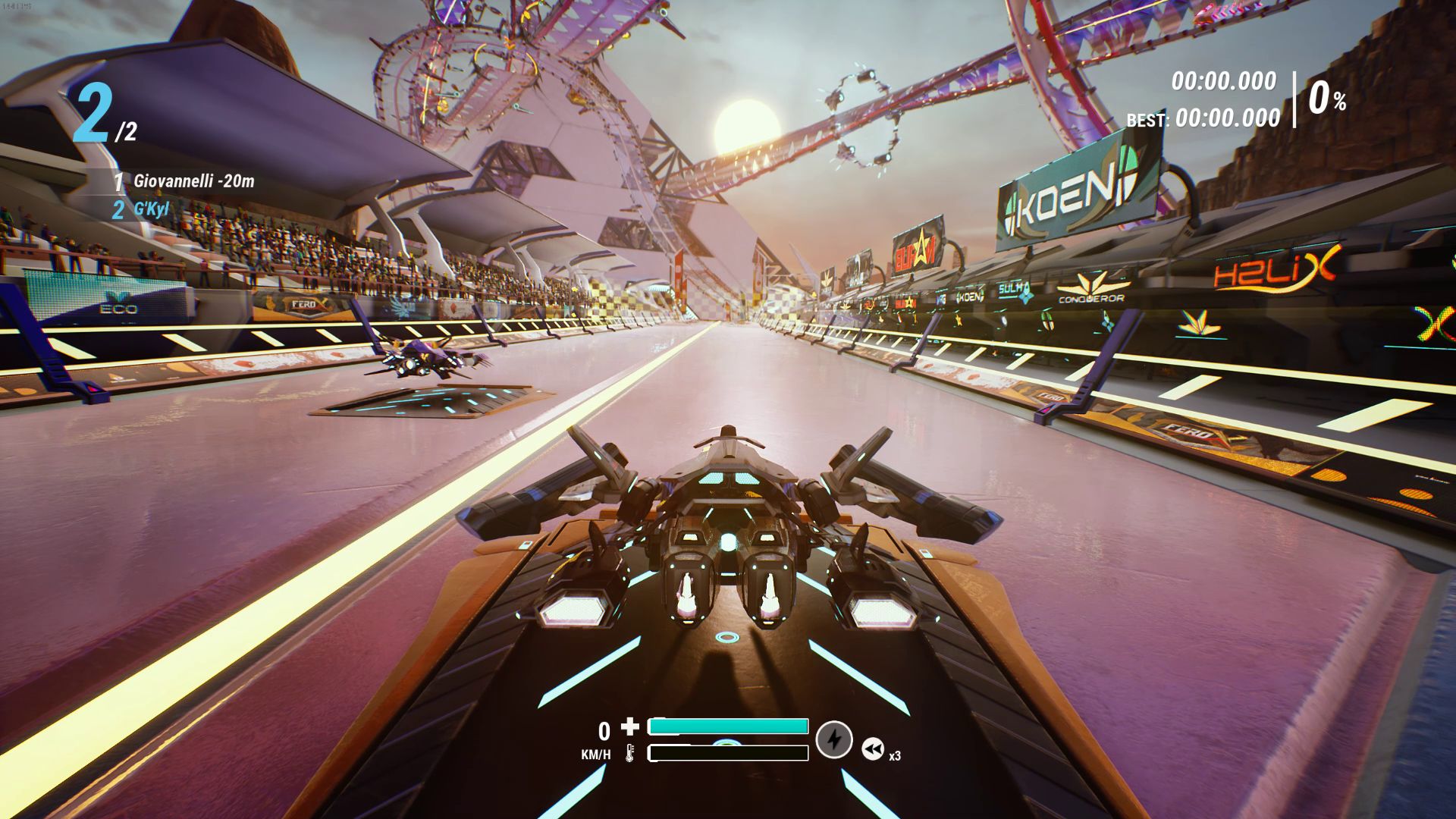
The key is that you can combine the two, which really pushes you into your seat. In other words, if you know the track, you can save a lot of time where possible – knowing these sections and driving cleanly is the decisive second killer. The trick is to overheat the turbo just long enough to keep the ship from falling apart. Because once the machine gets hot, it burns right through the shield – which is fine if you then run flawlessly for a few seconds to allow the shield to recover.
And this constant push to the limit is what gives Redout 2 the decisive kick.
Anyway, I think it’s great to bang through a series of corners with the sign warning beeping in panic, only to ignite the boost again on the next straight, even though the sign is still charging. In general, the sound accompanies the events very well with the futuristic roar of the engines, the electronic waving of the shield and the full clicking sound after a clean landing. The sometimes dreamily flowing, sometimes dry driving soundtrack does the rest.
jumps and blunders
Only the jumps in front of such good-sounding landings are unfortunately a downer for me, because it is sometimes unnecessarily complicated to align the glider by rotating, tilting, tilting, rolling and accelerating exactly so that it exactly… no, that it even at the arrives at the other end of a ski jump!
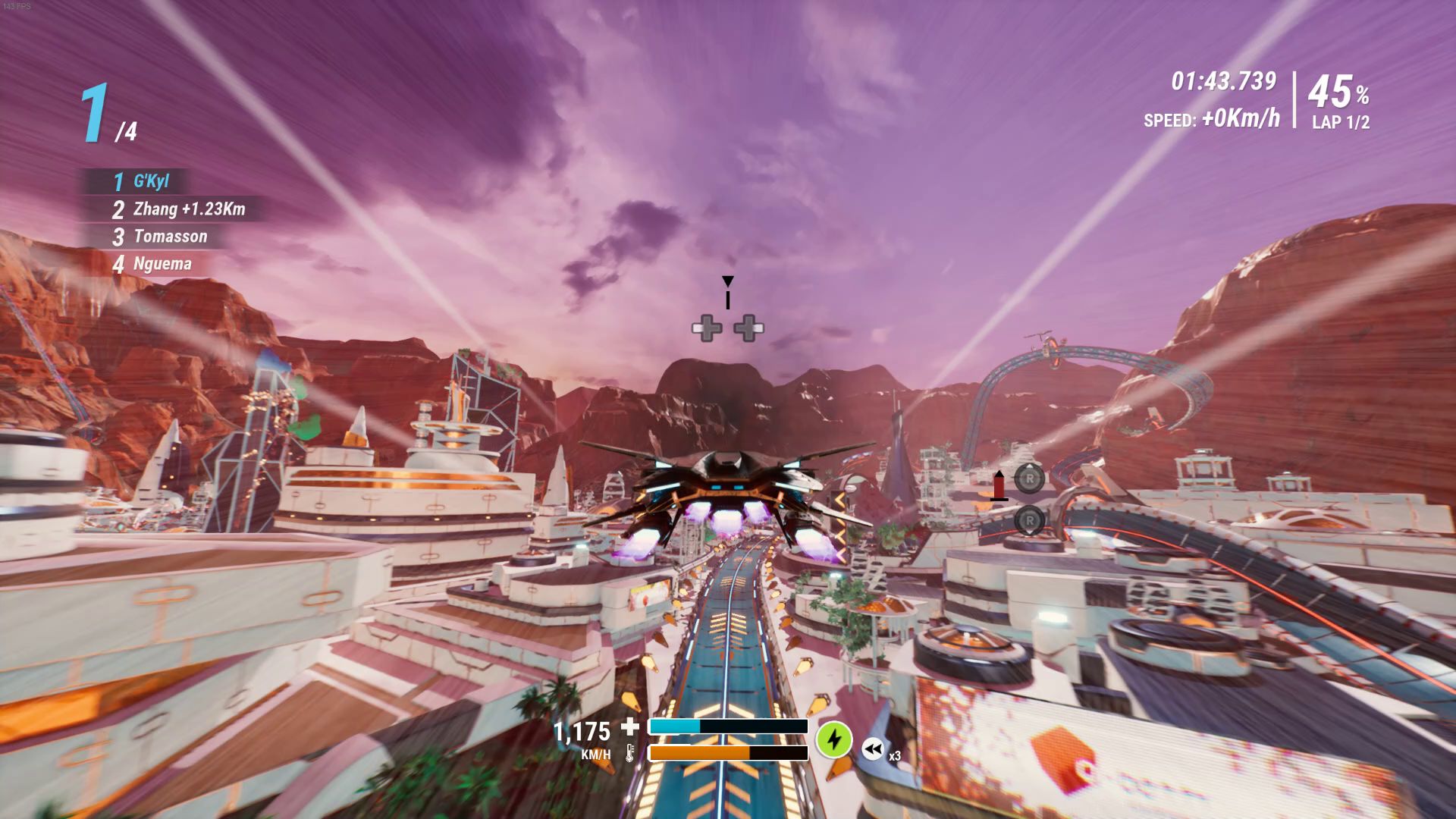
Sometimes you don’t even understand where you have to fly, especially in the first laps on a new track. Don’t get me wrong: There are some super cool jumps. Here and there, however, developer 34BigThings allows itself a track design that, with frightening certainty, draws all the fun out of the experience, as long as you haven’t yet mastered the layout in your sleep. Lucky in Disguise: This is essentially only the case in one of the nine locations (and its three track variants) and very few other places.
Luckily, curves that turn sharply behind a hill as if out of nowhere and behind which there is no lane boundary are fortunately the exception. However, hairpins in Redout 2 play a subordinate role anyway. Since the gliders react quite slowly to inputs, the local racing only works on a largely uniform course. The fact that many things feel the same as a result is another accusation that 34BigThings has to put up with.
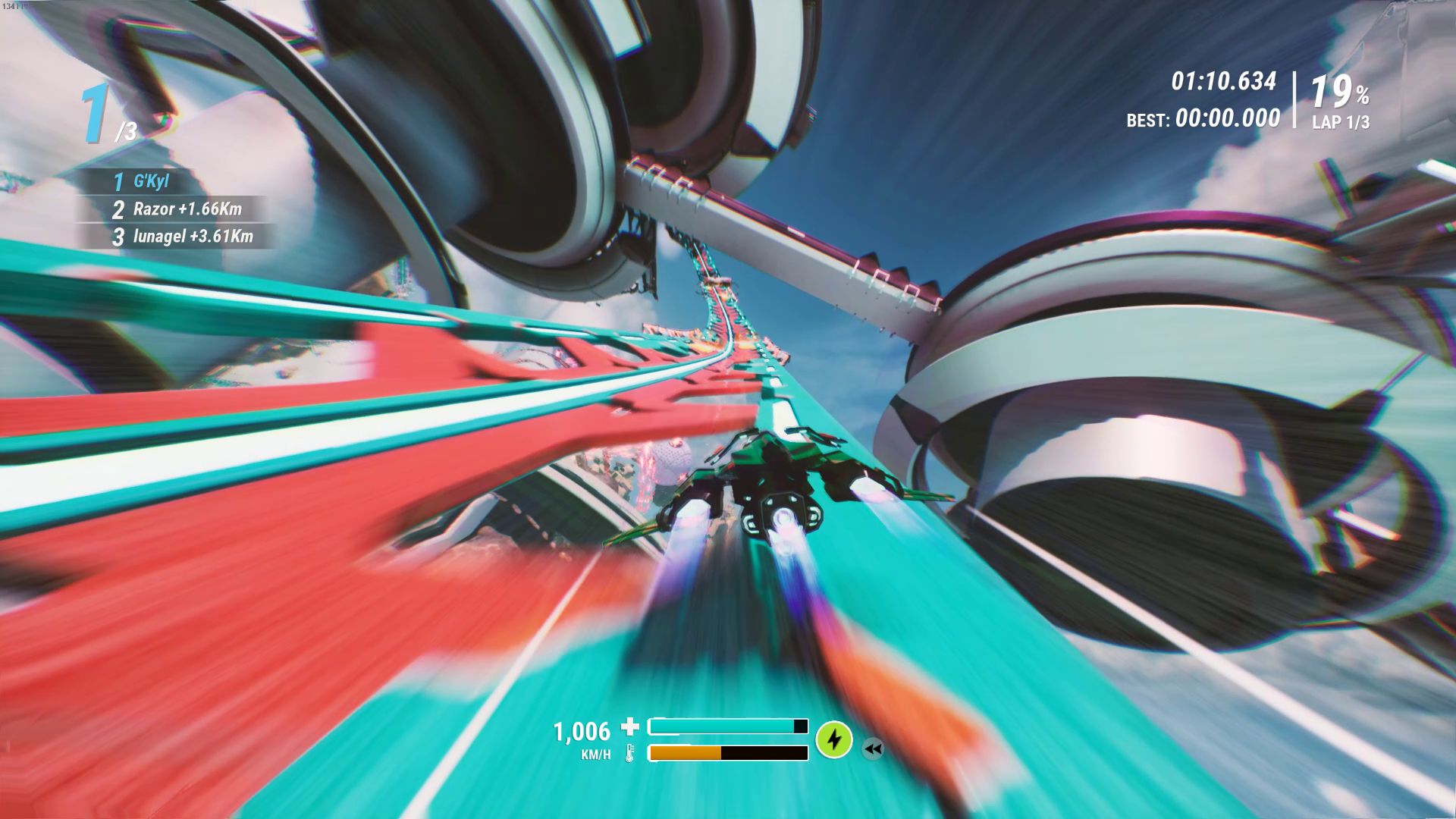
Oh, and then… why didn’t the developers do a little more fine-tuning before launching their sequel? Why doesn’t the rewind to fix blunders work in the tutorial of all places? Why does the campaign have pointless bonus objectives like avoiding respawns in a race where respawns are disabled anyway? Why are a few important details never explained, but very basic tutorials only unlocked after a few hours of career progression? How can it be that you can assign the controls freely, but under certain circumstances you are absolutely not allowed to determine which analogue stick movement you use to pull up the ship’s nose? And for what reason are the colors displayed incorrectly on the consoles or is there a thick gray haze over the image on the PC with HDR switched on?
The long ladder of career
There are a number of such annoyances. In fact, I had been annoyed about the game several times in the last few days, or at least had a big question mark over my head, which takes a little wind out of the sails of the elegant turbo trip.
Is that bad?
At first. If you have to come in first, these little things can be really annoying. After a few hours, that’s almost everything, but also details that continue to make you shake your head, but ultimately do little to harm the actual speed rush. For this, he simply shows too great strengths – for example an enormously extensive career in which you gradually unlock both new ships and numerous tuning parts. Of these, some merely beautify the glider (or do the opposite) and others increase its performance.
You gradually increase top speed, boost strength, improve steering and other properties, with higher-quality components obviously boosting one particular feature while clearly worsening another. You specialize with increasing experience and can even save different setups.
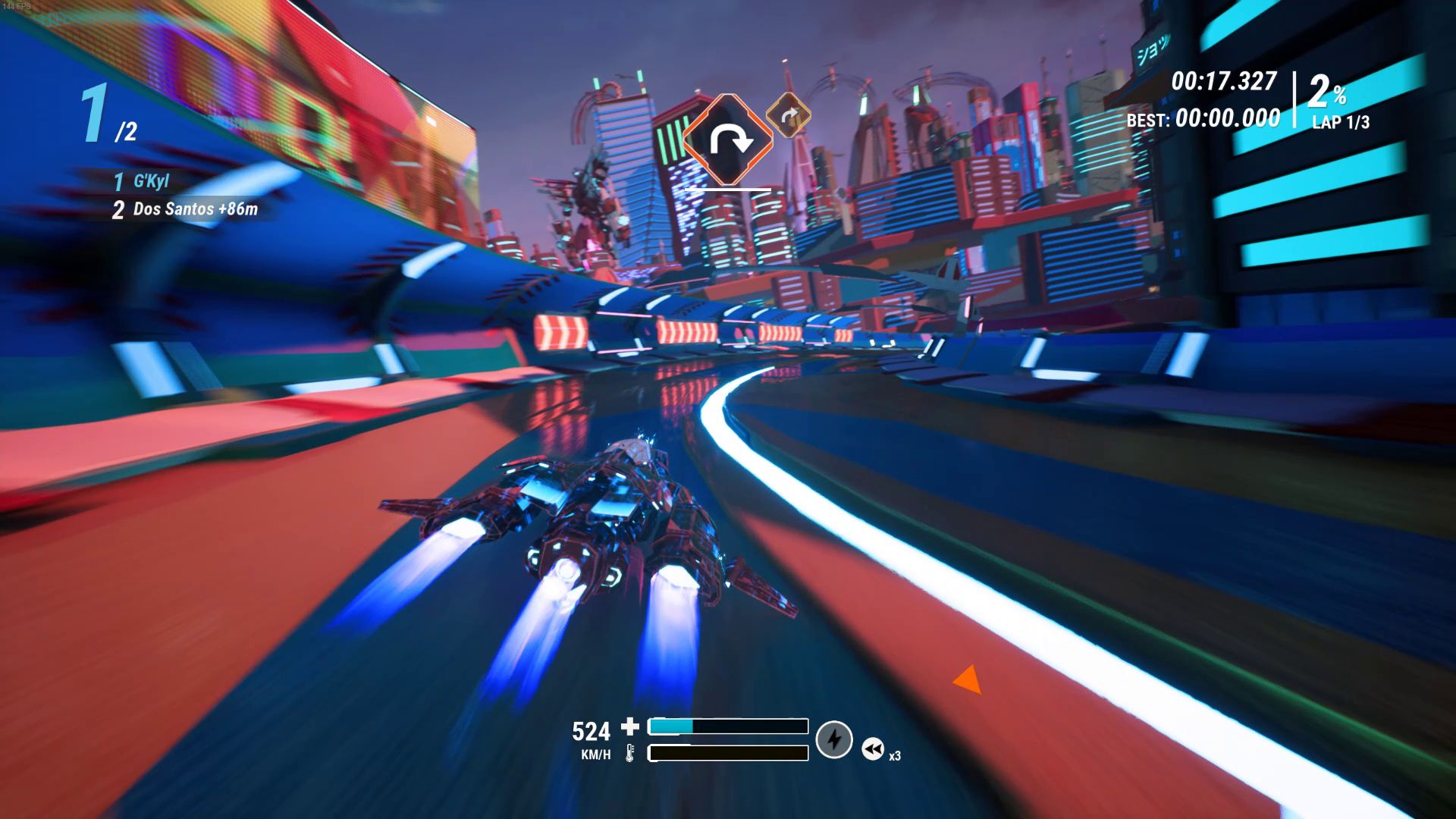
Logical: In the arcade mode, where positions in global rankings are at stake, only prefabricated high-end machines are available. The same goes for multiplayer, which will also be adding seasonal challenges and ranked races very soon. If you want, you can also invite your friends – unfortunately not across platforms. And unfortunately, there are currently no options for adapting or selecting online events in terms of route or event selection in any way. It would be nice if this is possible in the future.
But back to the career, which is not only long but also pleasantly demanding. In any case, this applies to the higher levels of difficulty, in which the AI pulls away from you so quickly that you should fly largely error-free and use the boosts effectively. Good this way! This means that a career is not just an employment measure, but also an exciting competition in the long term.
Fear not, you can tweak the entitlement down to the Wander Simulator equivalent, even allowing unlimited rewinding at the lowest tier. In addition, there are several driving aids of any strength. If you set them all to maximum, you are more a passenger than a pilot and can enjoy the view in peace.
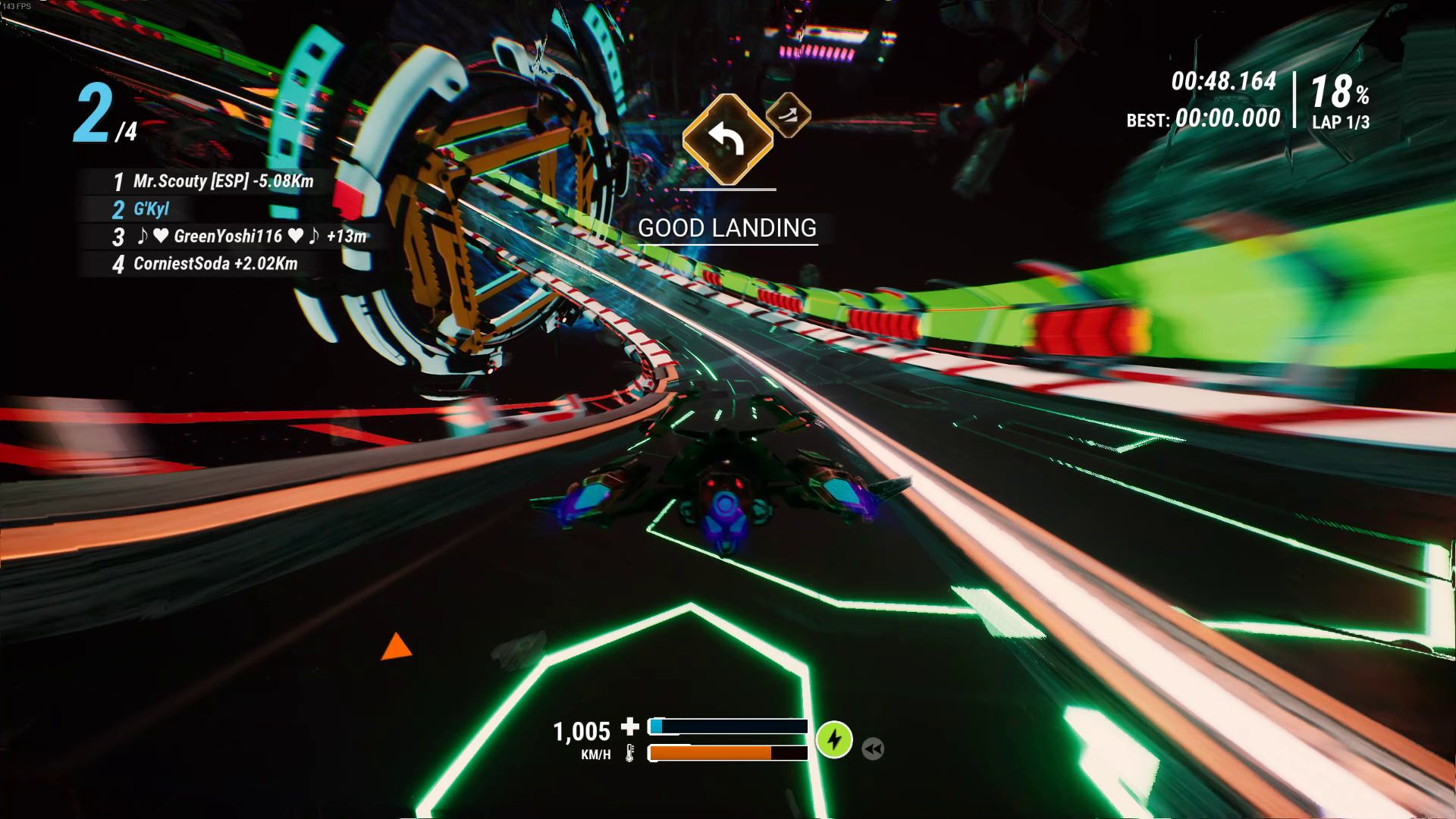
Last but not least, it is very important to me that 34BigThings has actually managed to create an AI in which you don’t just race against an anonymous crowd of opponents who are sometimes far ahead, sometimes far behind. On the contrary, I often find myself in duels against stubborn opponents who are about the same speed. You can keep them behind you for a moment by carefully observing their position markings and they make stupid mistakes like mine. So you often experience an amazingly tight back and forth until you finally manage to improve yourself and pull away from them.
This also contributes to the fact that I like to forgive this strong racer for some little things.
Redout 2 – test conclusion
I was definitely considering describing Redout 2 as a beautiful one-trick pony, since many of the tracks are damn similar in terms of their elements and the long career is therefore quite uniform. Throw in a few technical annoyances and you know why it doesn’t top its class. But my goodness, what an exhilarating experience it is when you’re constantly boosted into a giant top that you can see spinning in the ocean far in advance! Those are the moments I pick up the gamepad for, and Redout 2 is sort of the game for those moments. The fact that you can adjust the difficulty very variably to your own preferences, so you can experience wonderfully demanding races on a whopping 27 tracks and the whole thing is also supported by competent arcade and multiplayer variants, makes the whole thing round. In any case, my desire for a new WipEout kick has been satisfied for the time being.
The post Redout 2 – Test: The best high for speed addicts appeared first on Gamingsym.
